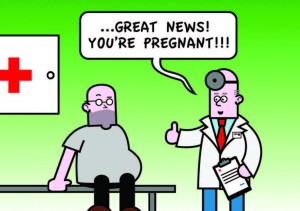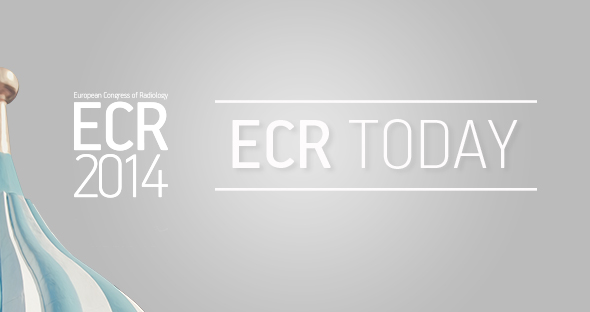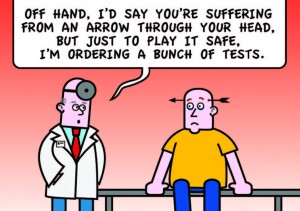Experts share strategies to help radiologists justify their imaging decisions
Watch this session on ECR Live: Sunday, March 9, 16:00–17:30, Room F1
Tweet #ECR2014F1 #SF15B
Evidence-based radiology, comparative effectiveness research and health technology assessment all play a role in the radiologist’s decision-making nowadays. Radiologists must ensure that they are imaging patients at the right time using the right test, and they need to justify radiological examinations and imaging-based interventional procedures on the basis of the best available evidence. The dedicated Special Focus session today at ECR 2014 will teach attendees how to use evidence to justify imaging decisions in day-to-day clinical practice.
Evidence-based radiology is a relatively new approach designed to inform clinicians of the most appropriate technique to use in a given clinical scenario. It has always been an important topic, but people have recently become more aware of this theme and expect more justification from the physicians, according to Professor Myriam Hunink, who will chair the session. She is a professor of radiology and clinical epidemiology at the Erasmus University Medical Centre in Rotterdam, the Netherlands, and adjunct professor of health decision sciences at Harvard University, Boston, USA.
“It’s becoming increasingly en vogue, and more-and-more attention is being given to it, partly because people are insisting that there should be evidence before we do something. There’s a couple of reasons for that, the main reason being that people realise that there are risks associated with what we do in radiology. So we constantly need to make a smart decision by weighing those risks against the benefits,” she said.
Radiologists need to justify the risks, especially those related to ionising radiation exposure, before deciding their imaging strategy. Not only patients, but also physicians, policy makers, ministries of health, health insurance companies and the organisations advising them are more aware of radiation-related risks, and they are paying more attention to minimising these risks than ever before.
“There have been a couple of reports in the media about the risks involved with the use of radiation. People have become aware of the fact that CT uses radiation and that if something goes wrong they could receive too much radiation. So radiologists really need to understand that the examination needs to be justified; it can’t just be done for nothing,” Hunink said.
Other potential risks, such as allergies to contrast media, which is used in both diagnostic and therapeutic radiology, must also be addressed. Radiologists also need to justify the budget of an examination. The development of new medical imaging technologies, together with recognition from clinicians of the value of these for their patients, has led to significantly higher costs. “People realise that we are paying a lot of money for our imaging, and it’s very clear that we can’t keep paying more and more, because the amount we are paying for healthcare is increasing every year. So we need to justify these costs,” she said.
Comparative effectiveness research is used by healthcare systems to develop a strategic approach to rationalising the use of imaging investigations. The health technology assessment approach serves to assess new and emerging imaging technologies in a systematic and timely manner. Different tools and concepts are advocated through these fields, from observational studies to randomised clinical trials, critical appraisal, decision-modelling, and cost-effectiveness analysis. The session will review these methods and show how they can make a difference in clinical practice.

Example of a false-positive test result in an extremely low (practically zero) probability situation. False-positive test results can have deleterious consequences if not recognised.
Using these resources can only be beneficial for radiologists, Hunink believes. “If they are called to justify their decisions, radiologists can use the analyses as a justification. If they don’t know what decisions to make, they can use these analyses to make the correct decision for an individual patient; the tools facilitate precision medicine and personalised medicine. And if they think the analyses are not applicable to their patient for whatever reason, they can use their judgment and reasoning to justify how the results of the analyses should be modified. Physicians are free to decide what they think is best for their patient, this is the art of medicine; decision analyses and cost-effectiveness analyses can help support their decisions,” she said.
The session should attract many delegates as the topic concerns every radiologist. “In the whole field of radiology there is always some form of risk. Maybe not of the test itself, but sometimes the risk of having a false-negative or a false-positive result. If you send somebody for an ultrasound examination for instance, there is no risk from the test itself, but if you have a false-positive finding, the patient will go on and have other tests (a CT or a biopsy, for example) which may be risky, and if it’s a false-negative result, then the diagnosis will be missed and the patient will not get the necessary tests and treatment. So even if the test itself is not risky, false findings can impose a risk,” Hunink said.
Special Focus Session
Sunday, March 9, 16:00–17:30, Room F1
SF 15b: Evidence-based radiology, comparative effectiveness research, and health technology assessment
» Chairman’s introduction
M.G.M. Hunink; Rotterdam/NL
» Evidence-based imaging
F. Sardanelli; Milan/IT
» State-of-the-art methods in EBR, CER, and HTA relevant to imaging
U. Siebert; Hall i. Tirol/AT
» Translating EBR, CER, and HTA results into imaging decisions in daily practice
F.J. Gilbert; Cambridge/UK
» Panel discussion:
Can EBR, CER, and HTA results provide justification for imaging decisions and how do we implement the results?



